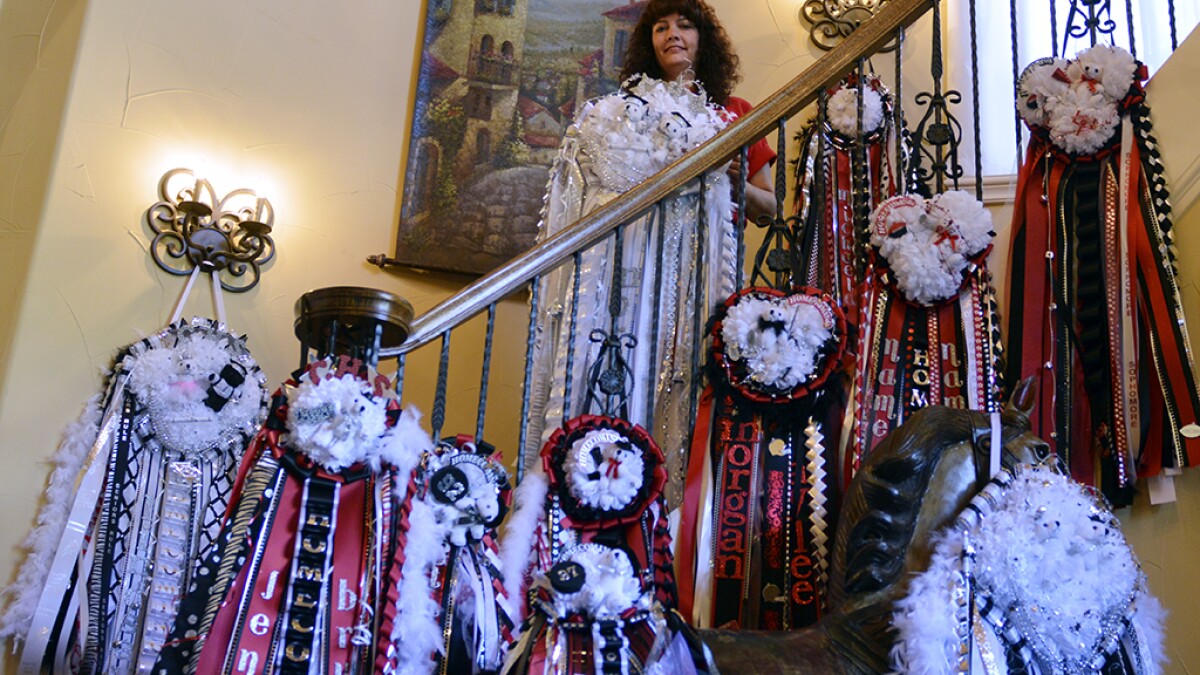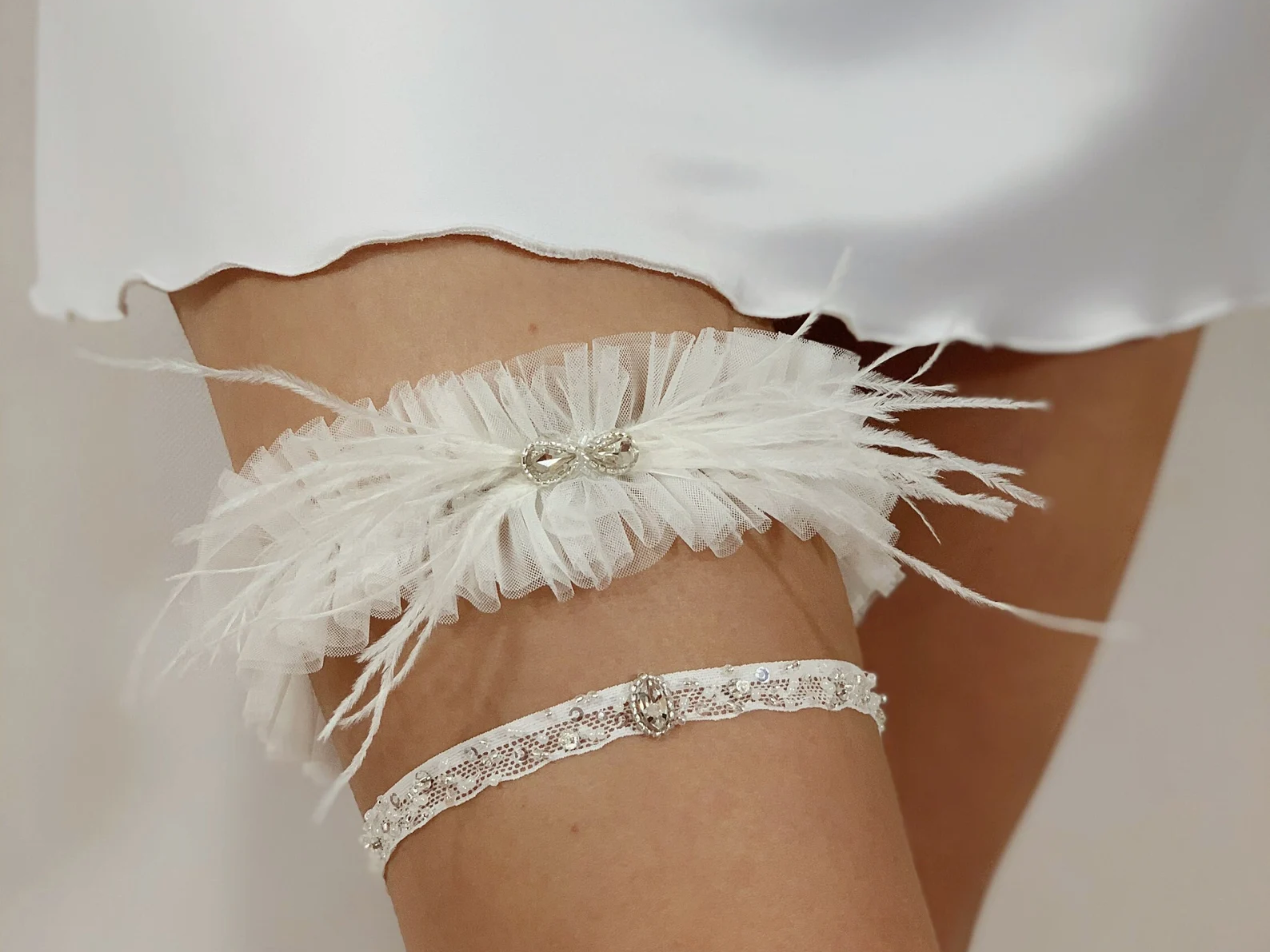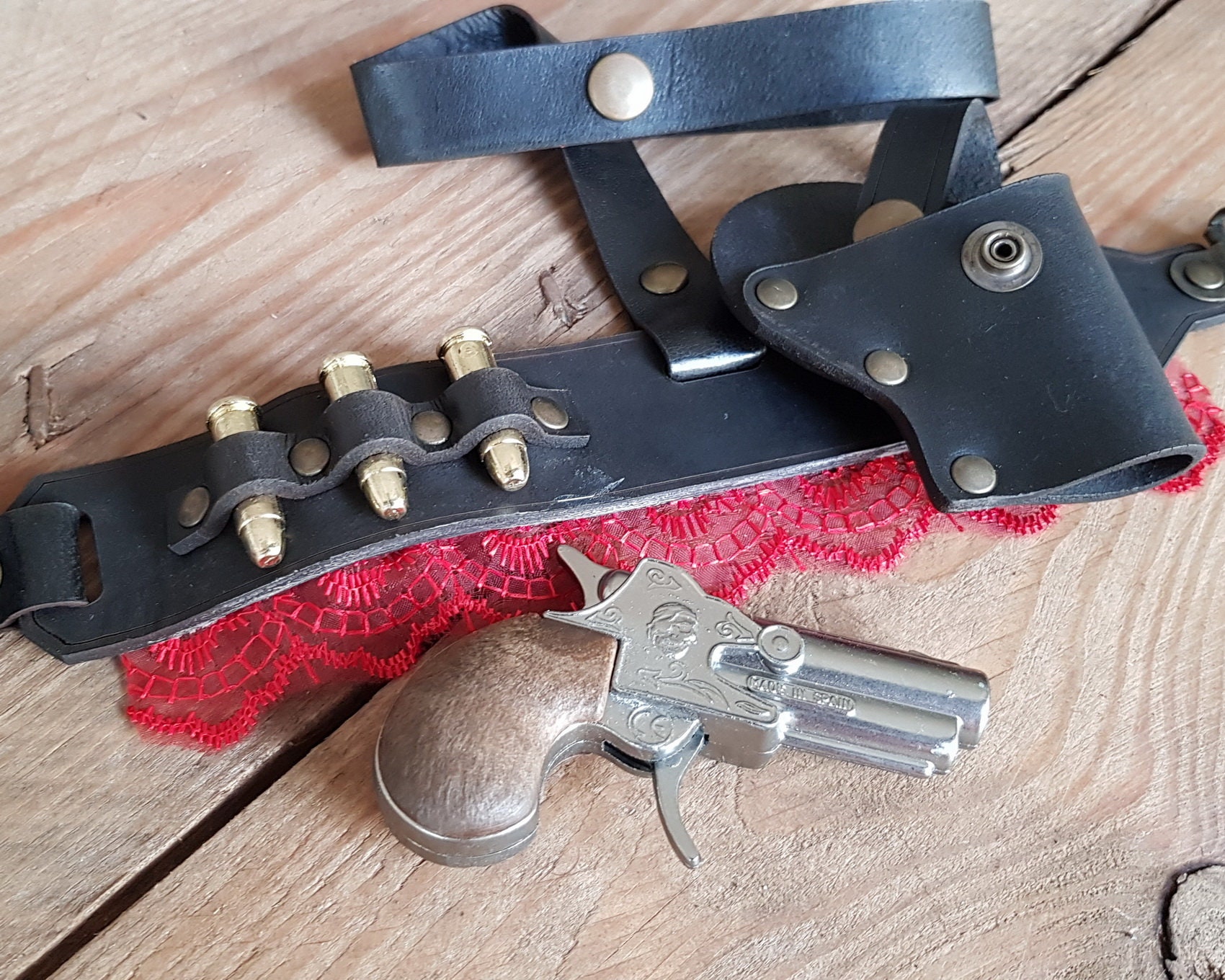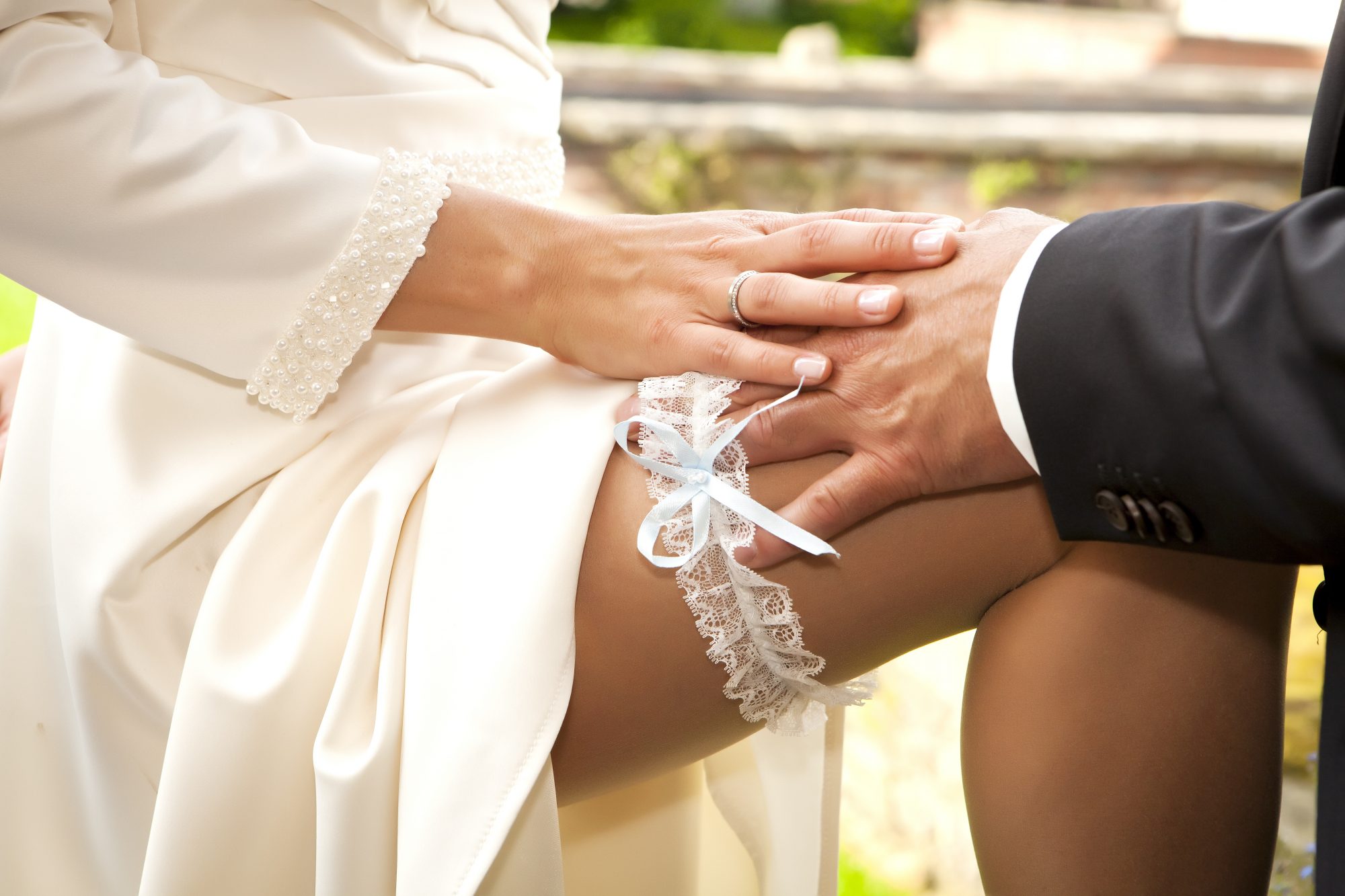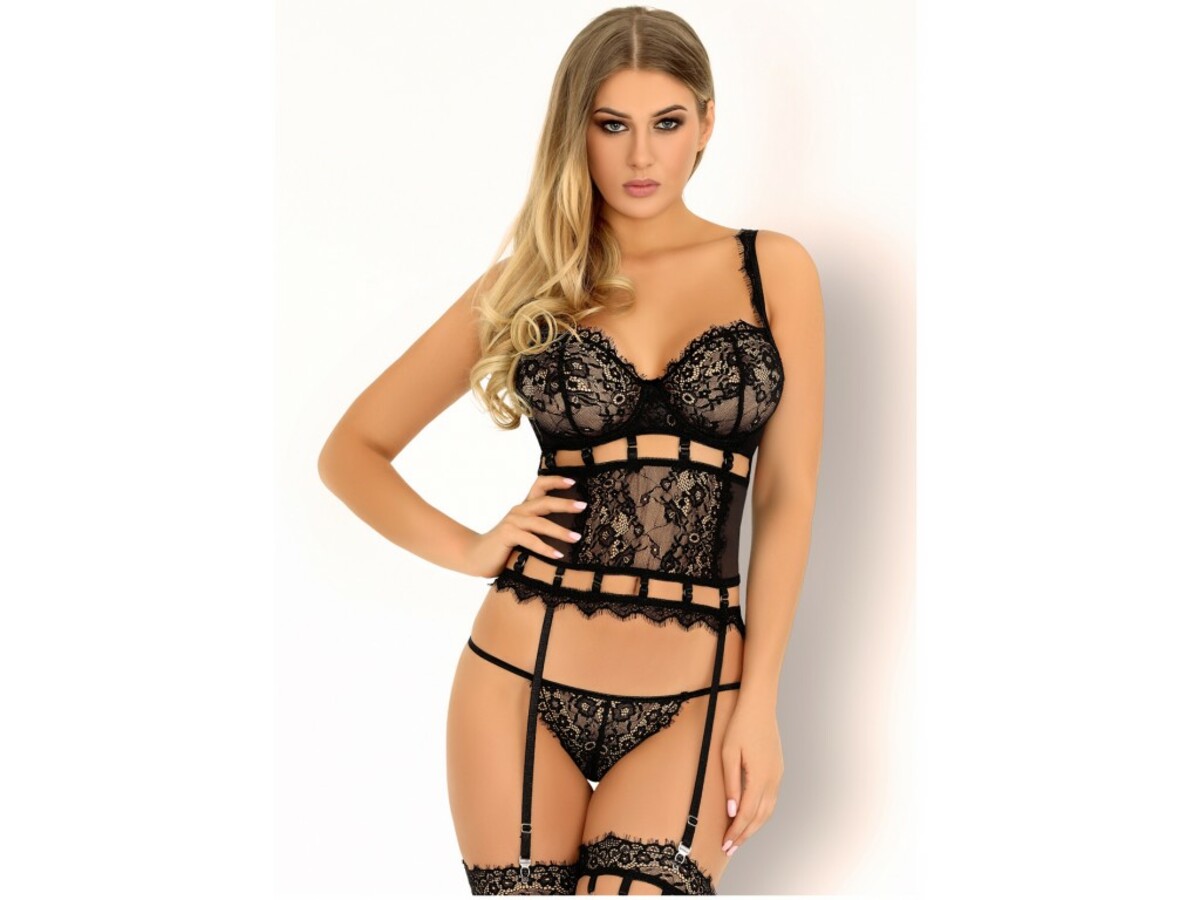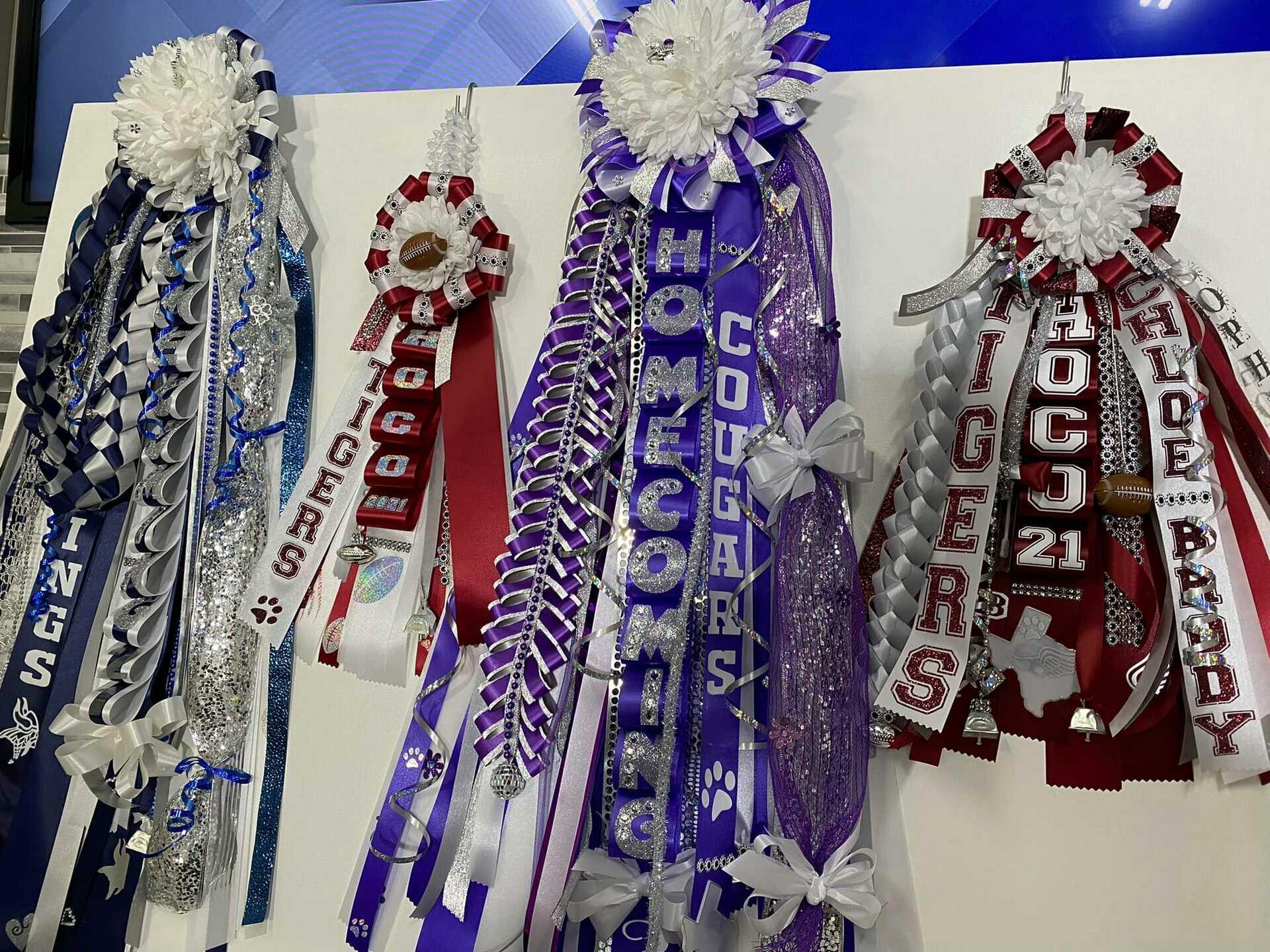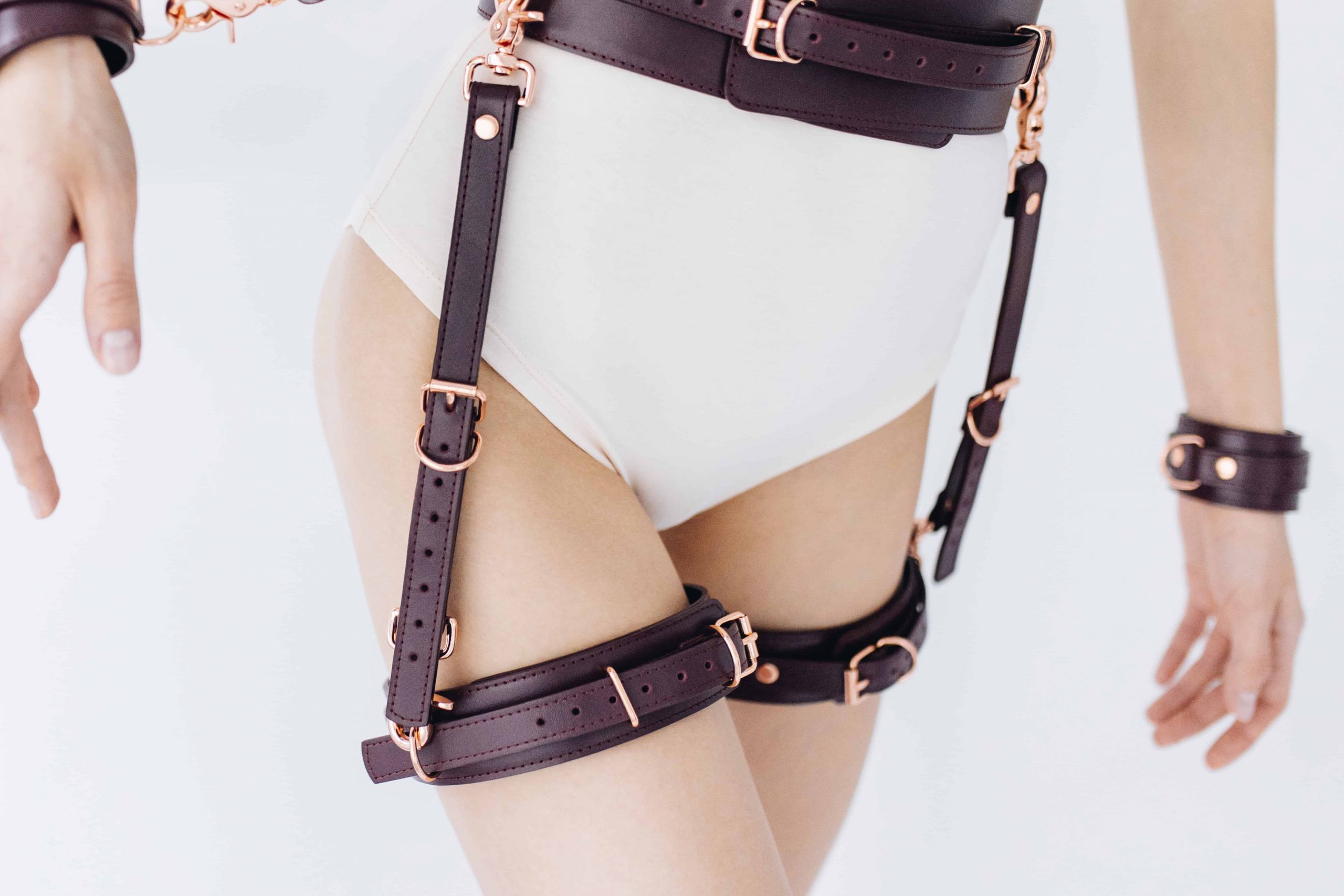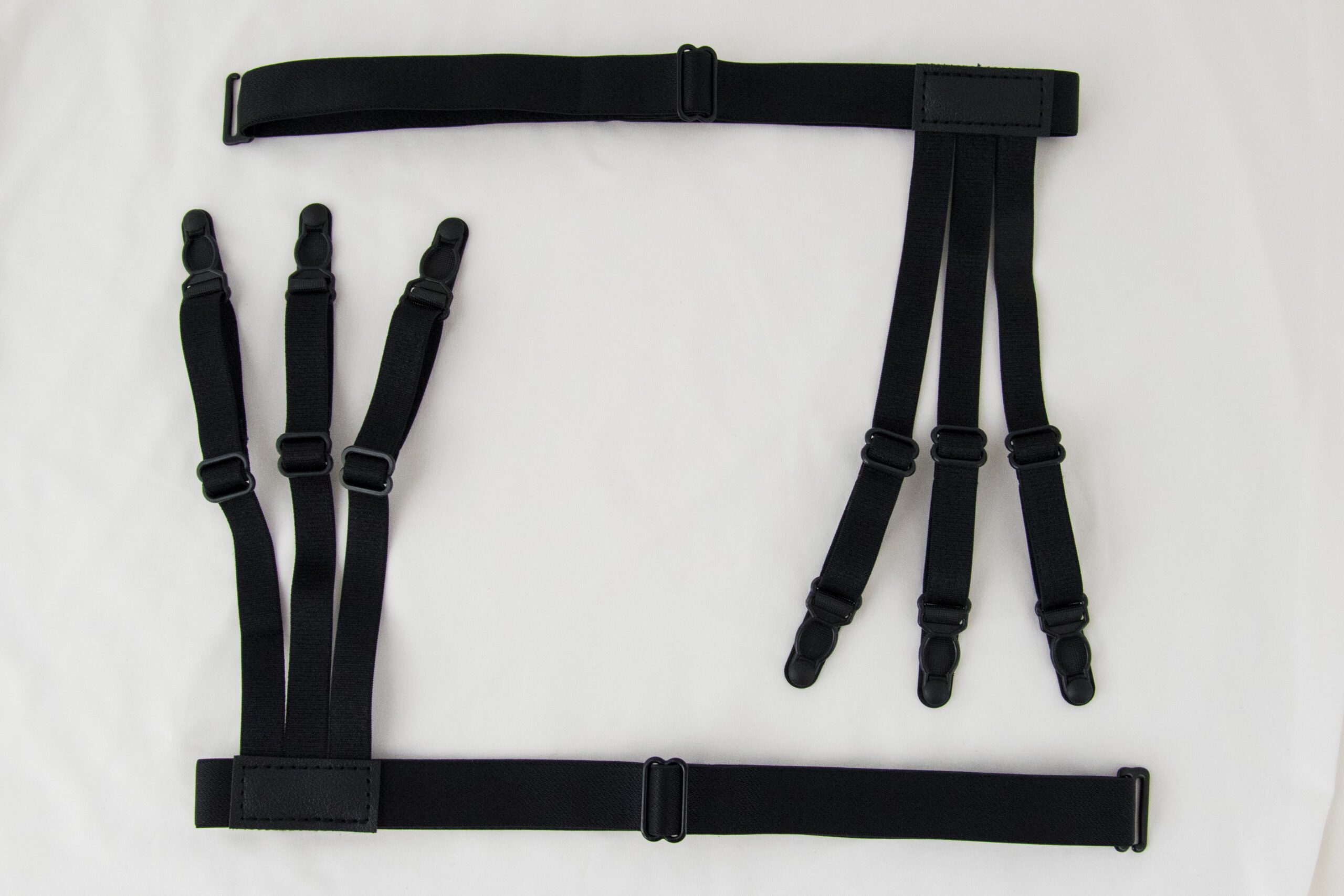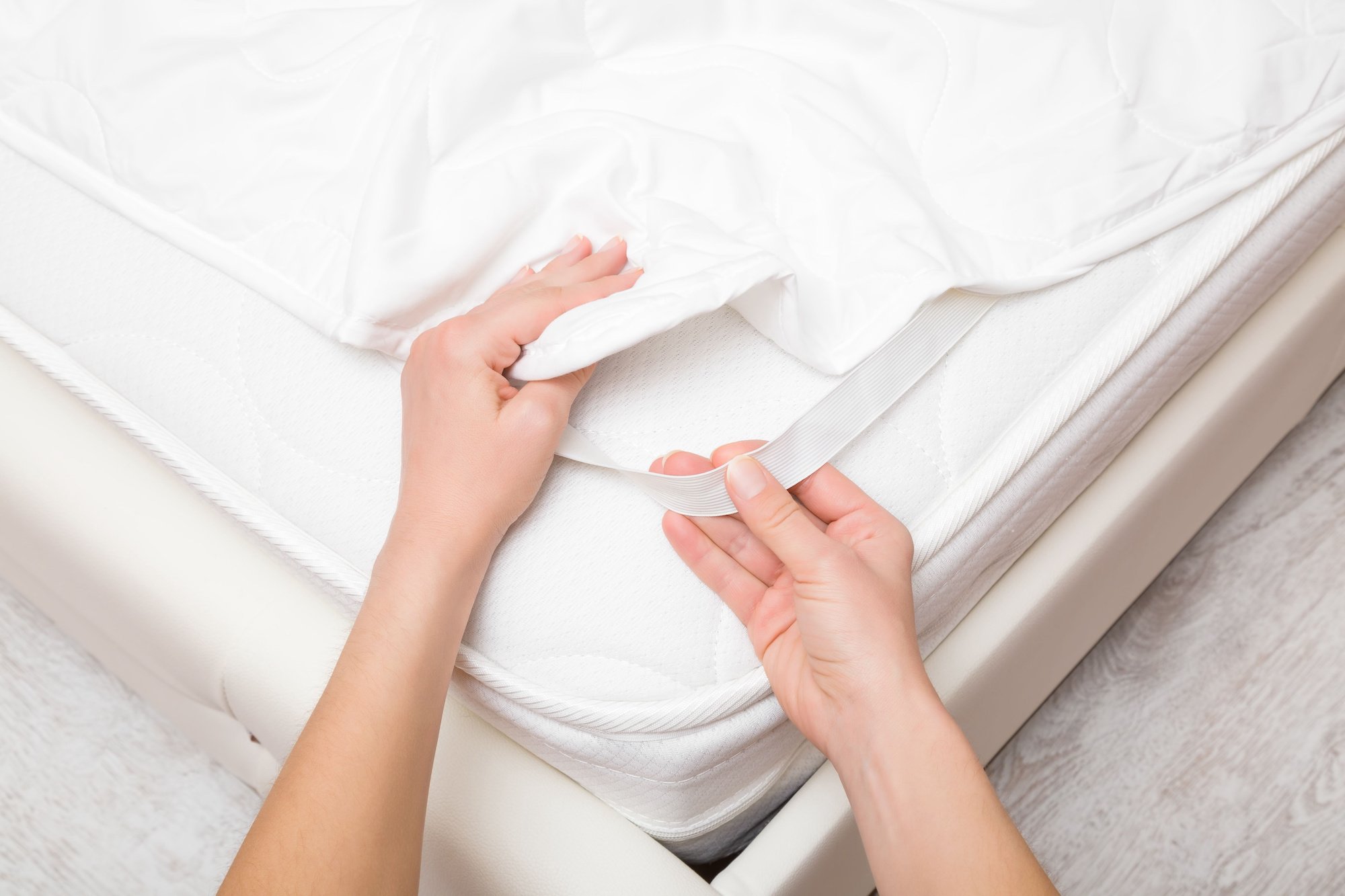Home>Latest Posts>What Are 18th Century Garters Made Of
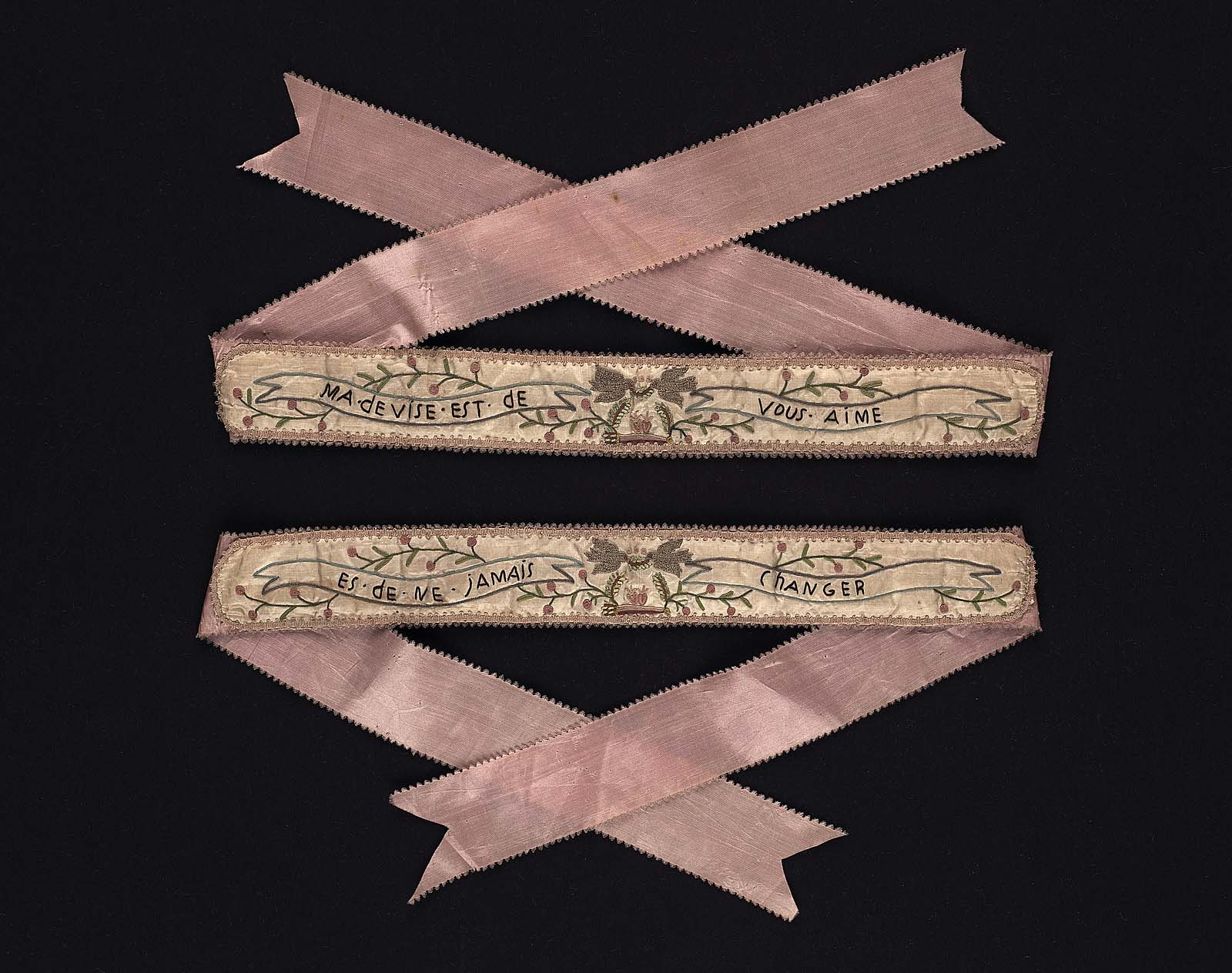

Latest Posts
What Are 18th Century Garters Made Of
Modified: August 11, 2023
Discover what 18th-century garters, made for women, are constructed with, and explore the materials used in their creation. Uncover the fascinating history behind these fashionable accessories.
(Many of the links in this article redirect to a specific reviewed product. Your purchase of these products through affiliate links helps to generate commission for Under-tec.com, at no extra cost. Learn more)
Table of Contents
What Are 18th Century Garters Made Of
Garters have been a staple accessory in women’s fashion for centuries, and the 18th century was no exception. These decorative bands served both a functional and fashionable purpose, helping to hold up stockings while also adding a touch of elegance to an outfit. But have you ever wondered what materials were used to make garters during this time period? In this article, we will explore the different materials that were commonly used to create 18th century garters.
Silk Garters: Silk was a popular choice for garters in the 18th century. Known for its luxurious texture and smooth sheen, silk garters were favored by the upper class for their elegance and refinement. These garters were often adorned with intricate embroidery or lace, adding to their aesthetic appeal.
Linen Garters: Linen, a lightweight fabric made from the fibers of the flax plant, was another material commonly used for garters during this era. Linen garters offered a more casual and practical option, particularly for everyday wear. They were durable and breathable, making them comfortable for extended periods.
Wool Garters: In colder climates, wool garters were the preferred choice. Wool provided insulation and warmth to the legs, making it ideal for wearing during the winter months. These garters were often knitted or crocheted, adding a cozy and textured look to an ensemble.
Ribbon Garters: Ribbons were a versatile material used to create garters in the 18th century. They came in a variety of colors and designs, allowing for customization based on personal style preferences. Ribbon garters were often tied in bows or knotted in an elegant manner, adding a feminine and delicate touch to an outfit.
Leather Garters: Leather garters were less common but still made an appearance in the 18th century. They were typically made from fine leather and provided a more structured and sturdy option. Leather garters were favored by those engaged in more physically demanding activities, offering support and durability.
Elastic Garters: While elastic as we know it today did not exist in the 18th century, there were versions of elastic garters available. These garters were made using a combination of elastic materials such as woven fabric or rubber cords, offering a stretchable and comfortable option.
Overall, the materials used to make 18th century garters varied based on the desired function, style, and social status of the wearer. Silk and linen garters were popular choices for their elegance and practicality, while wool and leather garters provided warmth and durability. Ribbon garters offered versatility in design, and elastic garters provided stretchability. Whether luxurious or more utilitarian, 18th century garters were crafted with care and attention to detail, adding a touch of sophistication to any outfit.
Introduction
Garters have long been an essential accessory in women’s fashion, serving both a practical and decorative purpose. In the 18th century, garters played a significant role in shaping the overall aesthetic of women’s attire. These bands, worn just above the knee, not only helped to hold up stockings but also added an element of elegance and refinement to an outfit.
During the 18th century, garters were made from a variety of materials, each offering its own unique characteristics and style. The choice of material often depended on factors such as social status, occasion, and personal preference. From delicate silk and linen to warm wool and sturdy leather, there was a wide range of options to cater to different needs and tastes.
Silk garters were highly favored by the upper class for their luxurious texture and smooth sheen. Adorned with intricate embroidery and lace, these garters exuded an air of sophistication and opulence. They were a symbol of wealth and refinement, demonstrating the wearer’s status within society.
On the other hand, linen garters provided a more practical and everyday option. Made from lightweight flax fibers, linen garters were durable and breathable, ensuring comfort during extended wear. They were often simple in design, yet still elegant in their simplicity.
In colder climates, wool garters were the go-to choice. Wool provided insulation and warmth to the legs, making it ideal for wearing during the winter months. Knitted or crocheted wool garters added not only functionality but also texture and coziness to an ensemble.
Ribbon garters offered a versatile and customizable option. Available in an array of colors and patterns, ribbon garters could be chosen to match or contrast with the rest of the outfit. Tied in delicate bows or knotted in an elegant manner, these garters added a feminine and decorative touch to any look.
While less common, leather garters made an appearance in the 18th century, particularly for those engaged in outdoor activities or more physically demanding pursuits. Crafted from fine leather, these garters provided a structured and sturdy option, offering both support and durability.
While elastic as we know it today was not yet available in the 18th century, there were variations of elastic garters. These were often made using a combination of woven fabric or rubber cords, providing a stretchable and comfortable option for the wearer.
Overall, the choice of material for 18th century garters reflected both practicality and fashion sensibility. Whether it was silk for elegance, linen for everyday wear, wool for warmth, ribbon for customization, leather for durability, or elastic for flexibility, each material added its own unique charm to the garters of this era. In the following sections, we will explore each material in more detail, shedding light on their characteristics and significance in 18th century fashion.
Silk Garters
Silk garters were highly sought-after accessories in the 18th century. Made from luxurious silk fabric, these garters added a touch of elegance and sophistication to any outfit. Silk, with its smooth and soft texture, was the ideal choice for those who wanted to showcase their social status and refinement. The sheen of silk added a subtle shimmer to the garters, catching the light and drawing attention to the legs.
One of the distinguishing features of silk garters in the 18th century was the intricate embroidery and lacework that adorned them. Skilled artisans painstakingly handcrafted these embellishments, adding delicate patterns and motifs to the garters. Floral designs, geometric shapes, and ornate initials were commonly incorporated into the embroidery, showcasing the attention to detail and craftsmanship involved in creating these accessories.
These silk garters were often available in a variety of colors, allowing for customization and coordination with other garments in an outfit. Soft pastels, bold jewel tones, and earthy hues were all popular choices, depending on the individual’s personal style and fashion trends of the time.
When not in use, silk garters were carefully stored and protected to maintain their quality and appearance. They were often wrapped in tissue paper or stored in fabric pouches to prevent any damage to the delicate silk fabric. The garters were considered precious, and great care was taken to ensure their longevity.
For the upper class, silk garters were a symbol of wealth and refinement. Women of high social status would often showcase their silk garters as a way to display their prestige and taste in fashion. They were a status symbol, reflecting the wearer’s access to luxurious materials and the ability to commission skilled artisans to create intricate designs.
In sum, silk garters were a prized accessory in the 18th century, known for their luxurious material, intricate embroidery, and lacework. They added an element of elegance and refinement to an outfit, making them a must-have for those in the upper echelons of society. The craftsmanship and attention to detail involved in creating silk garters made them not only functional but also beautiful pieces of art.
Linen Garters
Linen garters were a practical and versatile choice for women in the 18th century. This lightweight fabric, made from the fibers of the flax plant, offered durability, breathability, and comfort. Linen garters were favored for everyday wear, providing a functional accessory that could withstand the demands of daily life.
While not as luxurious as silk garters, linen garters still possessed a subtle charm and elegance. They were often simple in design, with minimal embellishments, allowing the natural texture of the linen to take center stage. Linen garters were typically available in neutral tones such as white, ivory, or beige, making them easy to coordinate with a variety of outfits.
Aside from their practicality, linen garters were also seen as more affordable and accessible compared to garters made from expensive materials such as silk. They were a popular choice among middle-class women who desired a functional accessory without compromising on style.
One of the advantages of linen garters was their breathability. The natural fibers allowed air to circulate, preventing excess moisture and ensuring comfortable wear. This made them suitable for a range of activities and climates, keeping the legs cool and dry.
Linen garters were often secured with ties or clasps, allowing for easy adjustability and ensuring a secure fit. They were typically worn just above the knee, providing support to hold up stockings and prevent them from slipping down.
In terms of care, linen garters required proper washing and storage to maintain their quality. They were often hand washed or gently machine washed using mild detergent. After washing, linen garters were air-dried or laid flat to prevent any shrinkage or distortion.
In summary, linen garters were a practical and affordable choice for women in the 18th century. They offered durability, breathability, and comfort while still maintaining a sense of elegance. Whether worn for everyday activities or special occasions, linen garters provided a functional accessory that was accessible to a wider range of women. Their simplicity and understated charm made them a versatile addition to any wardrobe.
Wool Garters
Wool garters were a popular choice in the 18th century, especially in colder climates or during the winter months. Made from the warm and insulating fibers of sheep’s wool, these garters provided both functionality and comfort.
One of the standout characteristics of wool garters was their ability to keep the legs warm. Wool is known for its excellent heat retention properties, making it ideal for wearing during colder seasons. The natural fibers trap warm air close to the skin, providing insulation and preventing heat loss.
Wool garters were often knitted or crocheted, adding a cozy and textured aesthetic to an outfit. The intricate patterns and designs created through knitting or crocheting showcased the craftsmanship and skill of the maker. Common patterns included cables, ribbing, and intricate lacework, adding visual interest to the garters.
These garters were available in various colors, ranging from earthy neutrals to vibrant hues. The choice of colors often depended on personal preference, fashion trends, and the desired coordination with other garments. Women could select wool garters that blended harmoniously with their outfits or those that made a bold statement with contrasting colors.
Wool garters were not only practical but also versatile. They could be worn for both indoor and outdoor activities, providing warmth and support to the legs. Women engaged in winter sports or spending time outdoors would often opt for wool garters to keep their legs cozy and protected.
Caring for wool garters required special attention. To maintain their quality, it was important to handle them with care during washing. Wool garters were usually hand washed in cold water with mild detergent, avoiding agitation and excessive scrubbing. After washing, they were laid flat to dry, away from direct sunlight or heat sources.
In summary, wool garters were a popular choice in the 18th century for their ability to keep the legs warm and their cozy aesthetics. Knitted or crocheted with intricate patterns, these garters added texture and visual interest to an ensemble. Whether worn for outdoor activities or as a fashion statement, wool garters provided both functionality and style during colder seasons.
Ribbon Garters
Ribbon garters were a versatile and fashionable choice in the 18th century. These garters were made from ribbons of various materials, such as silk, satin, or velvet. They offered a customizable option that allowed women to showcase their personal style and add a pop of color or pattern to their outfits.
One of the key features of ribbon garters was their versatility in design. Ribbons came in a wide array of colors, from soft pastels to vibrant jewel tones, allowing women to choose garters that perfectly matched or contrasted with their garments. The advent of printed ribbons also introduced a range of patterns, including florals, stripes, checks, and polka dots, further expanding the design options for ribbon garters.
Ribbon garters were often tied in bows or knotted in an elegant manner, adding a feminine and delicate touch to an ensemble. The soft and flowing nature of ribbons enhanced the visual appeal of the garters, creating a graceful and airy look.
These garters were not only visually appealing but also practical. They provided a secure and adjustable fit, allowing women to adjust the tightness to their preference. Ribbon garters were tied just above the knee, providing support to hold up stockings and prevent them from slipping down.
With their customizable nature, ribbon garters were suitable for various occasions and outfits. Women could choose more elaborate and decorative ribbon garters for formal events or opt for simpler designs for everyday wear. Ribbon garters were a versatile accessory that could be easily incorporated into different styles and ensembles.
Maintaining ribbon garters required gentle care. They were often hand washed or spot cleaned with mild detergent to avoid damaging the ribbons. It was important to handle them delicately, especially if they were adorned with delicate embellishments or trims.
In summary, ribbon garters were a popular choice in the 18th century for their versatility and customization options. Made from ribbons of various materials, these garters allowed women to showcase their personal style through the choice of color, pattern, and tying technique. Whether for formal occasions or everyday wear, ribbon garters added a feminine and decorative touch to any outfit.
Leather Garters
Leather garters were a less common but still notable choice in the 18th century. These garters were typically made from fine leather, providing a structured and durable option for those seeking a sturdy accessory.
One of the key advantages of leather garters was their strength and longevity. The inherent properties of leather made them resistant to wear and tear, making them suitable for more physically demanding activities or for individuals who required extra support. Leather garters were favored by women engaged in outdoor pursuits such as hunting, riding, or farming.
Leather garters provided a more structured fit compared to other materials like silk or ribbon. They held securely in place, preventing stockings from slipping down during movement. The strong and sturdy nature of leather ensured that the garters maintained their shape while providing the necessary support.
Although they were often less decorative compared to other types of garters, leather garters still possessed a rugged charm. They were often crafted with precision and attention to detail, showcasing the craftsmanship of the leatherworker. Some leather garters featured embossed or tooled designs, adding a touch of decorative flair.
Caring for leather garters involved regular maintenance to keep them in good condition. Keeping the leather moisturized and protected from excessive moisture or dryness was crucial. Special leather care products were used to clean and condition the garters, ensuring their longevity and durability.
While not as commonly worn for everyday fashion, leather garters provided a practical and sturdy option for specific activities or individuals, offering support, durability, and a touch of rugged elegance.
In summary, leather garters were a less common yet notable choice in the 18th century. Their strength, durability, and structured fit made them ideal for individuals engaged in physically demanding activities. While not as decorative as other materials, they still possessed a rugged charm and showcased the craftsmanship of leatherworking. Leather garters provided a practical and sturdy accessory option for those seeking support and durability.
Elastic Garters
Elastic garters, as we know them today, did not exist in the 18th century. However, there were variations of elastic garters available during this era. These garters were made using a combination of elastic materials, such as woven fabric or rubber cords, offering a stretchable and comfortable option for the wearer.
These early elastic garters provided flexibility and adjustability, allowing for a secure and snug fit around the leg. The elastic materials used would stretch to accommodate different sizes and provide support to hold up stockings without causing discomfort or constriction.
While not as common as other materials, elastic garters offered practicality and ease of use. They were often chosen for their convenience, as they did not require tying or fastening like other types of garters. The elastic bands could simply be stretched over the leg and adjusted as needed.
These garters were versatile and suitable for various activities and occasions. Whether for everyday wear or more active pursuits, elastic garters provided the necessary support and flexibility. They were particularly favored by women engaged in physical activities such as dancing or sports.
Caring for elastic garters involved basic maintenance. They could be hand washed or machine washed using gentle cycles and mild detergent. After washing, they were air-dried or laid flat to maintain their elasticity and shape.
Although not as visually decorative as other materials, elastic garters served their purpose of holding up stockings effectively. Their simplicity and functionality made them a practical choice for women seeking ease and comfort in their garters.
In summary, while the elastic garters we are familiar with today did not exist in the 18th century, variations of elastic garters were available. Made from stretchable materials such as woven fabric or rubber cords, these garters offered convenience, flexibility, and comfort. They provided support and were suitable for various activities and occasions, making them a practical choice for women in need of easy-to-use garters.
Conclusion
18th century garters were more than just functional accessories. They were symbols of fashion, social status, and personal style. From luxurious silk to durable leather, each material used in creating these garters had its own unique qualities and significance. Silk garters showcased elegance and opulence, while linen garters offered practicality and affordability. Wool garters provided warmth and texture, ribbon garters allowed for customization and creativity, leather garters offered strength and durability, and elastic garters provided flexibility and comfort.
These garters added a touch of sophistication to women’s attire, whether worn for special occasions or everyday wear. Intricate embroidery, lacework, knitting, or crocheting techniques embellished the garters, showcasing the skill and craftsmanship of the makers. The choice of material, design, and style allowed women to express their individuality and reflect their social standing.
Caring for these garters required attention and proper maintenance. Each material had specific care instructions to ensure their longevity and beauty. From gentle washing and proper storage to avoiding excessive exposure to sunlight or moisture, taking care of these garters was crucial to preserve their quality.
In conclusion, 18th century garters were much more than just functional accessories. They were crafted with care and attention to detail, adding elegance, style, and individuality to a woman’s ensemble. Whether made from silk, linen, wool, ribbon, leather, or early elastic materials, these garters were not only practical but also served as fashion statements and symbols of social status.
